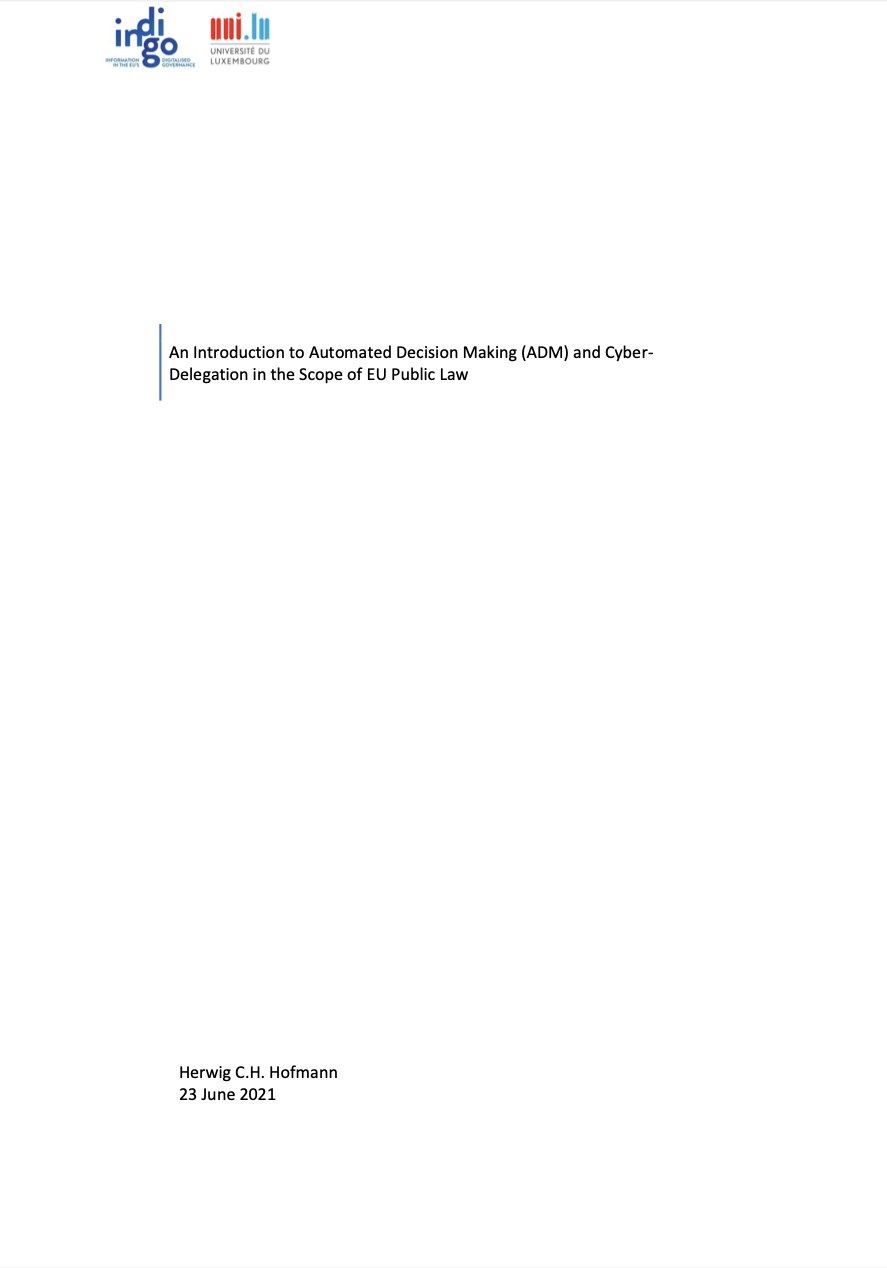Author: Herwig C.H. Hofmann
Date: 23 June 2021
Automated decision-making (ADM)1 systems are based on software supporting, or replacing, elements of human decision making in implementation of EU law. ADM systems are deployed in an increasing amount of policy areas. They support decision- making and rule-making procedures by EU institutions and bodies as well as by Member State bodies acting in the scope of EU law. Improved availability of information and advanced computation power to process such information produces benefits for decision- making. But integrating technological solutions into decision making procedures risks introducing potential dysfunctionalities, diminishing individual rights, and reducing accountability.
This paper introduces and gives an overview over many of the design questions which the use of ADM in public decision-making procedures in the scope of EU law therefore raises. Can compliance with general principles of EU administrative law and its specific legislative requirements be ensured in an anticipatory manner? Which requirements of technical design of ADM systems and their relation to the data basis, which are used as sources of information searches and analysis are necessary? On the other hand, how should ADM technology relate to elements of human decision making and how to ensure meaningful ex post accountability mechanisms, remedies, and possibilities of effective judicial protection.

